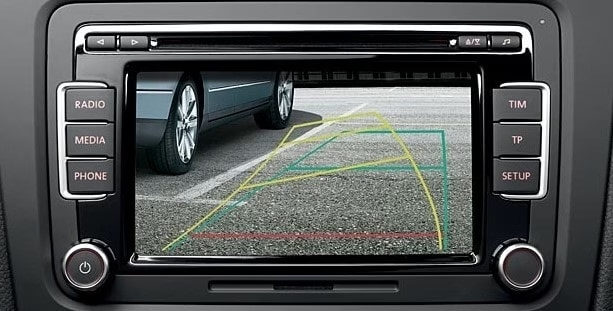Navigating the Rear View: Demystifying Your Car's Backup Camera Display Lines
Remember the days of craning your neck, twisting your torso, and relying solely on side mirrors to back up? It wasn't that long ago, was it? For many of us, those days are a distant memory, thanks to the ubiquitous backup camera. But while the camera itself offers a fantastic view of what's behind you, it's those colorful lines superimposed on the display that truly transform a tricky maneuver into a confident one. They're not just random squiggles; they're a sophisticated visual language designed to keep you, your vehicle, and everything around you safe.
The Visual Cues: Decoding the Colors
At first glance, the grid of lines on your backup camera might seem a bit like a video game interface. And in a way, it is! Each color serves a distinct purpose, acting as a visual guide to help you gauge distance and trajectory. It's pretty clever, actually, how a simple color-coding system can convey so much critical information in a split second.
Red, Yellow, Green: Your Distance Markers
Think of these lines as a traffic light for your rear bumper. They're universally recognized for a reason, making them intuitive even for first-time users.
- The Red Line: This one's your immediate warning. It typically signifies the closest safe distance to an object, often within a foot or two of your vehicle's rear bumper. If something is touching or crossing this red line, you're really close. It's your "stop now" signal. I've seen too many folks ignore this one, only to hear that dreaded crunch. Don't be that person.
- The Yellow Lines: These are your mid-range indicators. You'll usually see a couple of these, spaced further apart than the red line. They help you estimate distances like three feet, six feet, or even more, depending on your vehicle's calibration. They're great for judging how much room you have before you need to start thinking about braking, or if you're trying to squeeze into a tight spot. They give you that crucial buffer zone.
- The Green Lines: Ah, the green lines. These are often dynamic, meaning they bend and move as you turn your steering wheel. They show your vehicle's projected path. This is incredibly helpful for aligning your car perfectly with a parking space or navigating a curved driveway. It's like having a virtual laser pointer showing exactly where your car is headed. Mastering these can make you look like a parallel parking pro, even if you're not.
Beyond Distance: Aiding Parking and Enhancing Safety
The utility of these lines extends far beyond just telling you how close you are to that shopping cart. They're fundamental tools for precision maneuvering and, more importantly, for preventing accidents.
For instance, when you're attempting a parallel park, those green lines become your best friend. You can watch them guide you into the spot, ensuring you don't clip the car in front or behind. And for backing into a garage or a tight parking bay, the yellow and red lines provide the confidence to get as close as needed without making contact. It's a game-changer for anyone who's ever struggled with spatial awareness in reverse.
But let's not forget the primary benefit: safety. Backup cameras, and by extension, their display lines, have been instrumental in reducing back-over accidents. They provide a crucial view of blind spots, helping drivers spot small children, pets, or objects that might otherwise be invisible from the driver's seat. It's a simple technology, really, but its impact on road safety is profound.
The Bigger Picture: Reliability and Recent Developments
While the concept of these lines is straightforward, the technology behind them isn't always flawless. The reliability of backup camera systems is paramount, and recent events underscore this importance.
Just recently, in May 2025, Ford issued a significant recall affecting nearly 1.1 million vehicles . The issue? A software glitch that could prevent the rearview camera from displaying images. Imagine relying on those lines, only for the screen to go blank when you shift into reverse. It's not just an inconvenience; it's a serious safety hazard. This recall, reported by reputable sources like mlive.com, USA Today, and CNBC , highlights the ongoing challenges automakers face in ensuring the consistent functionality of these critical safety features.
Automotive safety experts consistently emphasize the need for rigorous testing and quality control in all vehicle technology, and backup cameras are no exception. The community, while not specifically reacting to the lines themselves, generally praises the utility of these systems in preventing accidents. This Ford recall serves as a stark reminder that even seemingly simple features require robust engineering and software to perform reliably.
Looking Ahead: The Evolution of Visual Assistance
What's next for these helpful lines? We're already seeing advancements like 360-degree camera systems, which stitch together views from multiple cameras to give you a bird's-eye perspective of your vehicle. These often integrate the same colored guidelines, but with an even broader context. Some vehicles even offer augmented reality overlays, projecting the lines directly onto the real-world view, making them even more intuitive.
Ultimately, the lines on your backup camera display are more than just a convenience; they're an essential safety feature that empowers drivers to navigate tight spaces and avoid potential hazards with greater confidence. They've become an indispensable part of modern driving, and frankly, I don't know how we ever managed without 'em.
